Top Java Tools: 63 Tools to Power Every Phase of Java Development
By: Alexandra
| March 19, 2023

Many know Java as one of the simplest, but most powerful (not to mention sought-after) programming languages used by web developers. There are others who see it in the opposite light, saying that Java is a hard and more complex programming language.
In order to execute your Java coding more effectively, there are a handful of Java tools that web developers can use in different phases of programming/development. Below, we’ve listed 63 of them – the essential tools that every web developer needs in their Java toolkit. They’re listed below in no particular order, but we have categorized them to make it easy for you to find the type of Java tool you’re looking for. Click on a category below to jump to a specific section:
General Java Development Tools

When it comes to developing Java-based applets and applications, a necessary tool is JDK. The JDK includes the Java Runtime Environment, the Java compiler, and the Java APIs. This tool is easy to use both for new and experienced programmers.
Key Features:
- Java Runtime Environment
- Java compiler and Java APIs
- Good for beginners and professionals, alike
Cost: FREE
@gradle
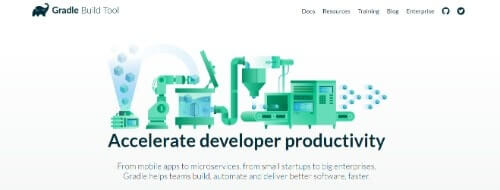
Gradle is a tool that is a combination of almost everything you could need. It can help in developing anything from mobile apps to microservices and is suitable for companies from small startups to big enterprises.
Key Features:
- Build anything
- Rich API that can automate everything
- Fast
- First-class support for your IDE of choice.
Cost:
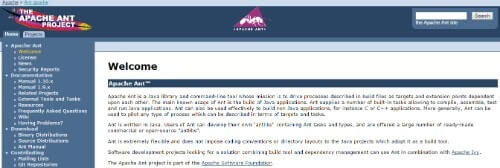
Apache ANT™ is an open source tool by Apache Software Foundation. The tool is very simple, with many features. It is a Java library and command-line tool that aims to drive processes.
Key Features:
- Simple
- Automate tasks
- Java library, command-line tool
- Built-in tasks that allow you to compile, assemble, test and run Java applications
- Can be used to pilot any type of process
Cost:
@cucumberbdd

Cucumber-JVM is a Cucumber implementation for the most popular JVM languages. It consists of several modules that are downloadable from public maven repo.
Key Features:
- It supports different JVM languages
Cost:

JD-GUI is a graphical utility that exhibits Java source codes of “.class” files.
Key Features:
- Fast Java decompiler
- Intuitive design
- Easy navigation
- Search function and general options
- Ending note
Cost:
@hibernate

Hibernate is a popular persistence API/Object relational mapping (ORM) Java tool.
Key Features:
- Domain model persistence for relational databases
- Full-text search for your domain model
- Annotation based constraints for your domain model
- Domain model persistence for NoSQL datastores
- Command line tools and IDE plugins for your Hibernate usages
Cost:
@Oracle

Javadoc is an API documentation-generating tool in HTML format that works through doc comments in source code. It is offered by Oracle and is free.
Key Features:
- Doclets API
- Taglet API
- MIF Doclet
- DocCheck Doclet
- Exclude Doclet
- Doclet Toolkit
Cost:
@mysql

MySQL is one of the most popular open source databases. It is also supported and trusted by Oracle Corporation.
Key Features:
- Cross-platform support
- Update-able views
- Stored procedures, using a procedural language
Cost:
- Standard: $2,000
- Enterprise: $5,000
- Cluster CGE: $10,000
@docker

Docker is a leading software container platform. It is used to eliminate “works on my machine” problems when collaborating on code with other parties.
Key Features:
- Package dependencies with apps in Docker containers for portability and predictability
- Works with any stack
- Better team collaboration
- Ready for production
- Extensible and flexible
Cost:
- Docker Community Edition (CE) – FREE
- Docker Enterprise Edition (EE)
- Basic – Starting at $750 per node / per year
- Standard – Starting at $1500 per node / per year
- Advanced – Starting at $2000 per node / per year
@VMware

VMWare is a virtualization tool that allows users to partition a single physical server into multiple virtual machines.
Key Features:
- vSphere that features VMotion – moved running virtual machines (VMs) from one server to another
- vSphere with Operations Management
- VMware Integrated OpenStack
Cost:
@grailsframework

Grails is previously known as Groovy on Grails. It is a programming framework based on Groovy, for the JVM built on top of Spring Boot.
Key Features:
- Smooth Java integration
- Domain-specific languages
- Plugins
- IDE Support
- Integrated ORM/NoSQL support
- Powerful view technology
- Spring-powered dependency injection
Cost:
IDEs
@JetBrains
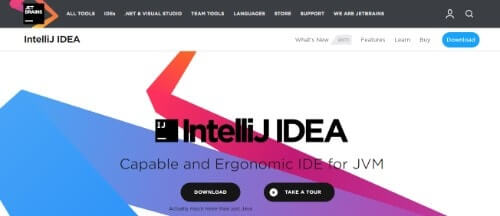
For the Editor or IDE, IntelliJ IDEA was reported by RebelLabs Java Tools and Technologies Landscape as the top IDE in 2016. IntelliJ IDEA has helped many developers come up with innovative Java solutions. It is designed to maximize developer productivity and is a Java tool that makes the experience more enjoyable.
Key Features:
- Can help boost productivity with the use of “Smart Code Completion” and “On-the-fly Code Analysis”
- Advanced support for web and mobile development
- Deep intelligence
- Framework-specific assistance
Cost:
- FREE trial
- New Subscription
- IntelliJ IDEA Ultimate
- US $ 499.00 /1st year
- US $ 399.00 /2nd year
- US $ 299.00 /3rd yr onwards
- All Products Pack
- US $ 649.00 /1st year
- US $ 519.00 /2nd year
- US $ 389.00 /3rd yr onwards
- Special Price for Perpetual License Holders* (20% off)
- IntelliJ IDEA Ultimate
- All Products Pack
- US $ 519.00 /1st year
- US $ 389.00 /2nd year
- US $ 389.00 /3rd yr onwards
@EclipseFdn

Eclipse is another top IDE tool as reported on the DZone Guide to the Java Ecosystem, 2015 edition. Many developers prefer Eclipse because of the amount of assistance that it can provide when it comes to code completion, refactoring and syntax checking. Overall, Eclipse, is also a great open source community of Tools, Projects, and Collaborative Working Groups.
Key Features:
- Free and open source
- Code completion assistance
- Refactoring and syntax checking assistance
- Java Development Tools project (JDT) with plug-ins
- Language combination support (C/C++ and PHP IDE)
Cost: FREE
@netbeans

NetBeans is another top-notch IDE tool that is both free and open source. It features converters, editors, and code analyzers. It has a worldwide community of users and developers.
Key Features:
- Java, JavaScript, HTML5, PHP, C/C++, and more
- Converters
- Fast and smart code editing
- Code analyzers
- Static analysis that can help you write bug-free code
Cost:
@jdeveloper

Oracle JDeveloper is a free IDE that can help you create Service Oriented Architecture with Java, or Java Enterprise Edition applications.
Key Features:
- Complete end-to-end development for Oracle’s platform and Oracle’s applications
- They offer many resources, demos, training, tutorials
- Discussion forum
Cost:
Code Analysis/Coverage, Profiling, Logging, and App Performance Tools
@Stackify

What could be better than a debugging tool that works seamlessly with your existing processes? Enter Retrace, Stackify’s APM that combines errors, logs, metrics, and monitoring in a single suite of tools to supercharge your application performance.
Key Features:
- Combines logs, errors, and APM
- Structured/semantic logging
- Advanced searching and filtering capabilities
- View and search custom log properties
- Automatic color-coding to draw attention to errors and warnings
- Tracking and reporting on where your log messages originated in your code
- Detailed traces on web requests and transactions
- View full application error details
- Explore all your logging fields
- Log analytics
- Real-time log tailing
- Use tags (highlighted in your logs)
- Supports a variety of application and server logs
Cost:
- Flexible pricing based on traffic volume
- Start a free trial
@overopshq
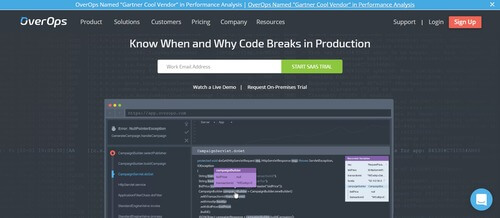
OverOps answers all the important questions that run through your mind when your code breaks (when? why?). It has a lightweight macro-agent that detects when your code breaks, notifies your team in real-time about where the break occurred and what variable state caused it, and more.
Key Features:
- Proactively detect when deployments produce errors
- Avoid release delays by mitigating production issues
- Find root cause in production with full source code and variables
- See variables behind any log error
- Real-time alerts
Cost:
- Lite: Free forever, 1 User / 1 JVM
- Pro: $109/month per JVM with annual plan, up to 25 users
- Enterprise: Contact for a quote

Monit offers easy, proactive monitoring for Unix systems, as well as network and cloud services. Monit makes it simple to conduct automatic maintenance and recovery. Think of Monit like your personal Unix “watchdog.”
Key Features:
- Conducts automatic maintenance and repairs when errors arise
- Monitors process characteristics, so you always know how much memory is being used
- Works across your Unix framework
- Modern, clean user interface
Cost:
- 5 Hosts: € 65
- 10 Hosts: € 129
- 20 Hosts: € 229
- 50 Hosts: € 349
- 100 Hosts: € 499
- 1,000 Hosts: € 699
@yourkit

YourKit is one of the most popular Java profiling tools on the market. It is known as having the most innovative and intelligent tools for profiling Java and .NET applications.
Key Features:
- Profile any SE or EE application, server, technology and framework
- Can be used with multiple platforms
- For teams and companies of any size
- All-in-one profiler
- Developer friendly environment
Cost:
- Per-seat license
- 1 year of basic support
- Single license $499 / €459
- 5-License pack $1,399 / €1,289
- 1 year of advanced support
- Single license $649 / €599
- 5-License pack $1,819 / €1,679
- 2 years of advanced support
- Single license $999 / €919
- 5-License pack $2,800 / €2,579
- Floating license
- 1 year of basic support
- Single license $2,499 / €2,299
- 5-License pack $2,999 / €2,759
- 1 year of advanced support
- Single license $3,250 / €2,990
- 5-License pack $3,899 / €3,589
- 2 years of advanced support
- Single license $5,000 / €4,600
- 5-License pack $6,000 / €5,520
- Enterprise license (contact for a quote)
- Academic license
- 1 year of basic support
- Per-seat license $99
- Institution-wide license $999
- Open source project license (contact for a quote)
@FindBugs

FindBugs is a static code analysis tool looking for bugs in Java code. It is distributed under the Lesser GNU Public License.
Key Features:
- Easy to use
- Simple way to look for bugs in Java code
- Free software
Cost:
@ASFMavenProject

Apache Maven is a software project management and comprehension tool that is best known for dependency management, build actions, debugging and collaboration.
Key Features:
- Can manage project’s build, reporting, and documentation from central information
- Simple project setup
- Consistent usage across all projects
- Dependency management including automatic updating, dependency closure
Cost:

JRat or the Java Runtime Analysis Toolkit is a tool that can measure an application’s performance. You can then identify possible problems that can affect application performance with the use of this tool.
Key Features:
- Monitors an application’s execution
- Persistent performance measurements
- Data can be viewed and analyzed on JRat Desktop (Swing application)
Cost:
@visualvm

VisualVM is Java profiling tool, which is designed for both development and production time use. It is lightweight and an all-in-one Java troubleshooting tool.
Key Features:
- It monitors and troubleshoots applications running on Java 1.4+
- Fits the requirements of application developers, end users, quality engineers, and system administrators
- Displays local and remote Java processes
- Displays process configuration and environment
- It can monitor process performance and memory
Cost:
@SonarQube

SonarQube is a leading static code analysis tool. It is an entire platform for code quality analysis, syntax checking and code metrics.
Key Features:
- Entire platform for code quality analysis, syntax checking and code metrics
- Write clean code
- DevOps Integration
- Centralize Quality
Cost:
- Contact for pricing information
@atlassian
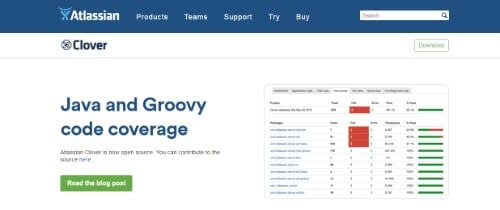
Atlassian’s Clover is a tool that provides Java and Groovy code coverage.
Key Features:
- Java and Groovy code coverage
- Free to open source projects
- Source code instrumentation technique that can collect code metrics
- Historical reporting
- Command-line tool set
Cost:

Log4j is the leading logging library framework. The new version of the tool offers significant improvements over its predecessor.
Key Features:
- API Separation
- Improved Performance
- Support for multiple APIs
- Avoid lock-in
- Automatic Reloading of Configurations
- Advanced Filtering
- Plugin Architecture
- Property Support
Cost:
@checkstyle_java

Checkstyle is a leading syntax checking tool. It is a development tool that can help programmers write Java code that follows coding standards.
Key Features:
- Highly configurable
- Can be made to support any coding standard
- Can check many aspects of source code
- Can find class design problems or method design problems
- Has the ability to check code layout and formatting issues
Cost:

Cobertura is a code coverage utility for Java. This Java tool helps calculate the percentage of code accessed by tests. It is free to use.
Key Features:
- Coverage annotations – it allows people to add a Java 6 annotation
- Ant Task Reference
- Works through command-line or via ant tasks
Cost:

JProfiler is a tool for Java profiling, combining CPU, Memory and Thread profiling into one application. It is offered by ej-technologies.
Key Features:
- Live profiling of a local session
- Live profiling of a remote session
- Offline profiling and triggers
- Snapshot comparisons
- Viewing an HPROF snapshot
- Request tracking
Cost:
- Standard: $593.81
- License with 1 year of Support & Upgrades: $830.62
- Academic: $236.81
- View other licensing options here
@zeroturnaround

XRebel is a tool for Java web application development time profiler. It supports real-time performance insights that can be very helpful for developers looking to find and fix any issues early on.
Key Features:
- Real-time feedback
- Always on
- Made for development
- Track down hidden exceptions
Cost:
- FREE trial
- $365 for annual license
Continuous Integration Tools
@atlassian

Bamboo is a continuous integration (CI) server by Atlassian to build, test and deploy code.
Key Features:
- Tech stack
- Deployment projects
- Dedicated agents
- Visibility
- Parallel tests
- Docker agents
- Triggers
- Quarantine
Cost:
- FREE for 30 days
- Small teams – $10
- Up to 10 jobs
- Unlimited local agents
- No remote agents
- All proceeds are donated to the Room to Read charity!
- Growing teams
- $800 for Unlimited jobs, Unlimited local agents, 1 remote agent
- $2,200 for Unlimited jobs, Unlimited local agents, 5 remote agents
- $4,000 for Unlimited jobs, Unlimited local agents, 10 remote agents
- $8,000 for Unlimited jobs, Unlimited local agents, 25 remote agents
- $8,000 for Unlimited jobs, Unlimited local agents, 25 remote agents
- $16,000 for Unlimited jobs, Unlimited local agents, 100 remote agents
- $40,000 for Unlimited jobs, Unlimited local agents, 250 remote agents
@teamcity

A build management and continuous integration server tool for Java, TeamCity is offered by JetBrains.
Key Features:
- Feature branches with Git or Mercurial
- Easy to scale
- Good customer support
- Continuous integration server
Cost:
- FREE for 20 build configurations
- Build Agent License: $?299.00
- Pricing for Enterprise Server Licenses here
@jenkinsci

Jenkins is the leading open source automation server and a clear leader in Java continuous integration. It can be used as a simple CI server or turned into a complete continuous delivery hub for any project.
Key Features:
- Self-contained and ready to run
- Easily configurable web interface
- Detects errors on the fly
- Hundreds of plugins for seamless integration
Cost: FREE
Java Testing Tools
@junitteam

JUnit is a framework that helps write repeatable tests. It is considered to be one of the top testing frameworks out there.
Key Features:
- Simple unit test tool
- You can test one block of code at a time
Cost:
@ApacheJMeter

JMeter is an instance of open source software, and a 100% pure Java application for load testing. This testing tool measures the functional behavior and performance of websites, web services, and more.
Key Features:
- Easy to understand GUI
- Easier test plan building, and application debugging
- Open source
- Ability to load and performance test different applications/server/protocol types
- Full featured Test IDE
- Command-line mode
- Complete and ready to present dynamic HTML report
Cost:
@MockitoJava

Mockito is one of the developer-favorites when it comes to Java mocking frameworks. It allows you to write tests with a clean and simple API.
Key Features:
- Produce readable, clean tests, and verification errors
- Stub method calls
- Verify interactions
- Slim API
- Natural mocking when TDD-ing Java code
- Similar syntax to EasyMock
Cost:
@SeleniumHQ

Selenium is an automated browser web testing Java tool. Most developers use this tool to test frameworks in large-scale web application testing. Web-based administration tasks can also be automated.
Key Features:
- Choose between Selenium WebDriver or IDE
- Runs in many browsers and operating systems
- Can be controlled by many programming languages and testing frameworks
Cost:
@spockframework

Spock is another behavior-driven development (BDD) testing tool which can support JVM language Java and Groovy. It is also an enterprise-ready specification framework.
Key Features:
- Enterprise-ready specification framework
- Highly expressive specification language
Cost:

Google’s Guide (pronounced as “juice”) is a popular dependency injection tool. It is a lightweight framework for Java 6 and above.
Key Features:
- Enables you to wire together and test objects with less effort
- Can use annotations when binding type is not sufficient
Cost:
Java Web Frameworks
@angular

AngularJS is a Java web framework with HTML that is great for declaring static documents. It is also fully extensible and can work well with other libraries.
Key Features:
- Can extend HTML vocabulary for application
- Fully extensible and works well with other libraries
- Features can be modified or replaced
- Add controls
- Create components
Cost:
@springcentral

Another top Java web framework, Spring MVC, provides mode-view-controller architecture and ready components. These can be used to develop web applications.
Key Features:
- Dispatches requests to handlers
- Configurable handle mapping, local, time zone, view resolution, theme resolution, and more
- Offers wide range of flexible handling method
- Clear separation of roles
- Adaptability, non-intrusiveness, and flexibility
Cost:
- Contact for pricing information
@vaadin

Vaadin is another open-source web framework that works for rich internet applications. It features server-side architecture, which makes the majority of logic to run on the servers.
Key Features:
- One language for the whole application
- Extensible with Java and HTML5
- UI logic is right next to the data
- Strong abstraction of web technologies
Cost:
Application Servers and Application Management
@TheApacheTomcat

Apache Tomcat® is one of the most used Java application servers out there. It an open-source implementation of the Java Servlet, JavaServe Pages, Java Expression Language, and Java WebSocket technologies.
Key Features:
- Powers numerous large-scale
- Lightweight app server
Cost:
@Oracle

Another popular Java tool by Oracle is the WebLogic Server. It is considered to be the best application server for building and deploying enterprise Java EE applications in the industry.
Key Features:
- Helps lower cost of operations
- Helps in enhancing scalability
- Based on standardized, modular components.
Cost:
- Contact for pricing information
@IBMWebSphere

IBM’s WebSphere in an application server that allows you to optimize, create and connect applications on-premise, and on the cloud.
Key Features:
- Optimize application infrastructure to reduce cost
- Connect existing Java applications to the cloud and unlock new value with API lifecycle management and cloud services
- Create and deploy cloud-native and web-based apps
- Migration support
- TCO Calculator
- Analyst Report
Cost:
- FREE Community Edition
- Contact for pricing information
@WildFlyAS

WildFly is application management framework that is known for being lightweight and flexible. It helps with building applications.
Key Features:
- Fast startup
- Ultimate web performance and scalability
- Memory diet (lightweight)
- Customizable runtime
- Unified configuration and management
- Domain and standalone management
- Supports latest standards and technology
Cost:
@glassfish

GlashFish is an open-source application server project by Sun Microsystems for the Java EE platform. It is now sponsored by Oracle.
Key Features:
- Issue tracker
- Documentation
- GlassFish Source Code repository
- IDEs
- Forum and mailing list
Cost:
@ApacheMesos

Mesos is an open source software solution that sits between the application layer and operating system to make it easier to deploy and manage applications.
Key Features:
- Abstracts CPU, memory, storage, and other compute resources away from machines
- Linear scalability
- High availability
- Containers
- Two-level scheduling
- APIs
- Web UI
Cost:
@rhdevelopers

Red Hat’s JBoss EAP (Enterprise Application Platform) is used for hosting apps. It provides an innovative modular, powerful management and automation, cloud-ready architecture and world-class developer productivity.
Key Features:
- Innovative/modular
- Cloud-ready architecture
- Powerful management and automation
- High availability clustering
- Distributed caching
- Messaging and transaction and full web services stack
Cost:
- FREE
- Contact for pricing info for support subscriptions and production use
Artifact Management
@sonatype

Sonatype Nexus is one of the leading artifact management Java tools. It is a repository manager that allows you to proxy, collect and manage dependencies so that it is easier to collect JARs.
Key Features:
- Automate and Scale DevOps
- Nexus Firewall
- Nexus Repository
- Nexus Lifecycle
- Docker
- Component Search
- Maven, Java, .NET, and more
Cost:
- FREE
- Nexus Pro
- Repository Pro
- Active/Active high available – built-in start at $1200/year
- Repository health check – built-in starts at $1200/year
- Universal component support – Free in OSS Version
- Artifactory Pro
- Active/Active high available – Upgrade to Pro Enterprise starts at $29,500/year
- Repository health check – Upgrade to Pro X + 3rd Party tools starts at $14,000/year
- Universal component support – Upgrade to Pro Edition
@jfrog

Another top-notch management option is the JFrog Artifactory. This tool is said to be the world’s only universal artifact repository manager. It fully supports software packages created by any language or technology.
Key Features:
- Download blocking
- Log Analytics
- PHP Composer
- Xray Integration
- Distribution repository
Cost:
- Free trial for all
- JFrog Pro Edition – $2,950
- SaaS Version (contact for a quote)
- JFrog Enterprise Edition starting with 3 servers – $29,500 (contact for a quote)
Languages
@ApacheGroovy

Groovy is a multi-faceted language for the Java platform. It is a powerful and dynamic language. It also has static-typing and static compilation capabilities.
Key Features:
- Flat learning curve
- Smooth Java integration
- Vibrant and rich ecosystem
- Closure, builders, runtime and compile-time meta-programming, functional programming, and more
- Domain-specific languages
- Scripting and testing glue
Cost:
@scala_lang

Scala is short for “Scalable Language.” You can use it by typing one-line expressions and observing the results. Some developers say that this tool feels like a scripting language.
Key Features:
- Seamless Java Interop
- Type Inference
- Flexible
- Pattern matching
- Concurrency and distribution
- Higher-order functions
Cost:
@kotlin

Kotlin is a statically typed programming language for the JVM, Android, and browser.
Key Features:
- It can reduce the amount of boilerplate code you need to write
- Safe
- Versatile
- Interoperable
- Command-line compiler or first-class IDE support
Cost:
Web Extension Tools

A Google Chrome add-on for quickly and easily testing your responsive website to find out exactly how it looks and functions on your users’ devices, Responsive Web Design Tester is a must-have tool for your Java developer toolkit.
Key Features:
- Accounts for browsers and browser size for popular devices
- See the dimensions of your responsive website exactly as they’ll appear
- Add your own device to find out how your responsive site works
Cost: FREE (add to Chrome)

Another Google Chrome add-on, Window Resizer lets you see how your design looks on other screen sizes.
Key Features:
- Test your layout on different, customized browser resolutions and sizes
- Resize the browser window to emulate various screen resolutions
- Set the window’s width, height, position, and preset icon to specific dimensions
- Customizable global key shortcuts
- Export and import settings to other computers
Cost: FREE (add to Chrome)

A helpful add-on for the Firefox browser, JavaScript Deobfuscator shows you what JavaScript is running on a web page. It’s a helpful tool when JavaScript is obfuscated or simply too large to browse easily.
Key Features:
- Detect and deobfuscate obscure, unintelligible, or generated on the fly JavaScript on any page
- View complete scripts the JavaScript engine is compiling and executing as they occur
- Workaround any tricks developers have in place to prevent you from viewing JavaScript
- Find out what’s happening on the backend during page reloading
- Click around to find out what codes are triggered by your actions
Cost: FREE (add to Firefox)
@Wappalyzer

Wappalyzer is an add-on that’s available for both Chrome and Firefox that lets you see what technologies websites are using.
Key Features:
- Recognizes over 1,000 web applications in 52 categories
- Dig deep into the inner-workings of successful websites
- Make sure to manually opt out if you don’t want Wappalyzer to collect data on your app usage
Cost: FREE
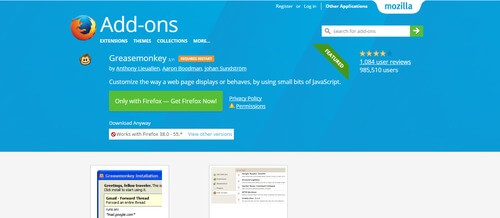
A Firefox extension that enables you to customize the way websites look and function, this is about as close as you’re going to get to rule the web.
Key Features:
- Uses small bits of JavaScript to customize website look/function
- Customize how web pages display and behave on your computer
- Change a site’s appearance, add new functions, fix bugs, and more
- Search through Greasemonkey’s extensive list of JavaScripts
Cost: FREE (add to Firefox)

IE Tab is a Chrome add-on that lets you run IE right inside your Chrome browser, making it easy to test the use of Java, Silverlight, and ActiveX controls on your web pages.
Key Features:
- Lock down for use only on sites that need it
- Create a list of URLs to automatically open in IE Tab
- Group Policy support for enterprise deployments
- Securely use the old IE rendering engine
- Edit Sharepoint documents instead of opening read-only
- Use Java, Silverlight, and ActiveX in Chrome seamlessly
Cost: $19, lifetime license (add to Chrome)
Messaging Distribution Tools
@Hazelcast

As an open-source, in-memory data grid solution based in Java, Hazelcast stores frequently used data across a scalable grid, which enables networks of machines to accelerate application performance.
Key Features:
- Clusters and pools network processors for networks of machines
- Use for caching, NoSQL, web session clustering, application scaling, and more
- Open binary client protocol that supports APIs for any binary primary language (including Java)
- Valuable organizational tool for development teams
Cost: Contact for a quote
@TheASF

ActiveMQ is designed for high-performance clustering, client-server, and peer-based communication. It’s a leader in open source messaging and integration patterns, and it can be used as an in-memory Java message service provider or for unit testing JMS.
Key Features:
- Supports a variety of Cross Language Clients and Protocols from Java, C, C++, C#, Ruby, Perl, Python, PHP
- Supports advanced features such as Message Groups, Virtual Destinations, Wildcards and Composite Destinations
- Fully supports JMS 1.1 and J2EE 1.4
- Spring Support for active embedding in Spring applications
- Supports pluggable transport protocols such as in-VM, TCP, SSL, NIO, UDP, multicast, JGroups and JXTA transports
Cost: Contact for pricing info (download the latest stable release)
@TheASF

Camel enables you to define routing and mediation rules in a variety of domain-specific languages, including a Java-based fluent API. The point of Camel is to make integration easier and more accessible for developers.
Key Features:
- Define routing and mediation rules in a variety of domain-specific languages
- Connect to a variety of transports and APIs
- Implement all the widely-used Enterprise Integration Patterns
- Works directly with any kind of Transport or messaging model
- Lets you work with the same API, regardless of the Transport type used
Cost: Contact for pricing info
Want more Java tools? Download our Comprehensive Java Developer’s Guide – it’s free and packed with Java development tools, the best books for Java developers at every level, must-follow websites, blogs, and Twitter influencers, the best LinkedIn groups, podcasts, and events. Essentially, everything you need to supercharge your Java development career in one place.
Conclusion
Developing and maintaining your Java application is easier than ever with all these tools. The goal is to help you make reliable and high-performing apps as fast as possible. Start with the low hanging fruit first, like exception tracking. You can also read our post on Java performance tools for more information.
Improve Your Code with Retrace APM
Stackify's APM tools are used by thousands of .NET, Java, PHP, Node.js, Python, & Ruby developers all over the world.
Explore Retrace's product features to learn more.
Learn More
































































